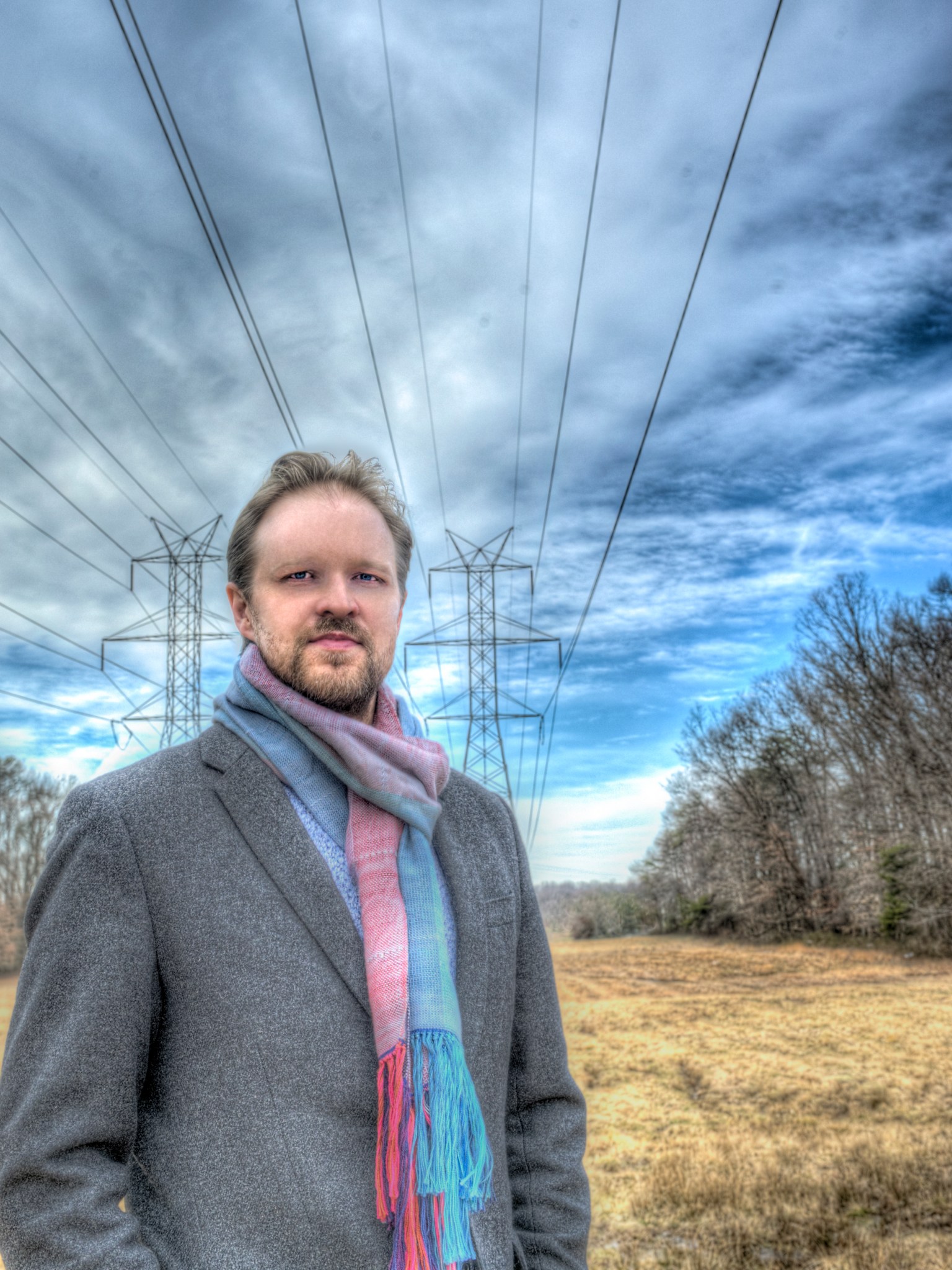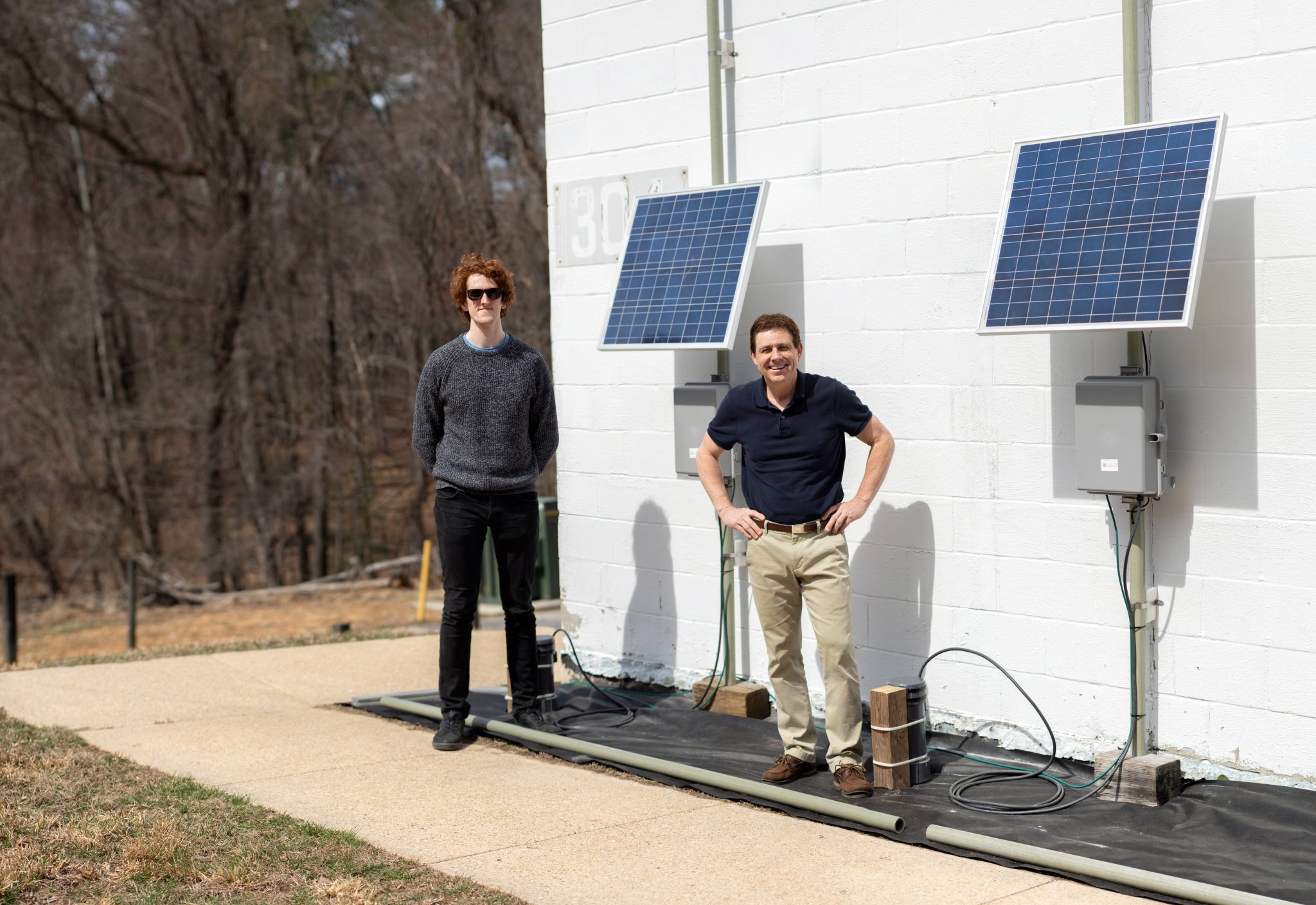A NASA expert in space-weather phenomena has won a patent for an idea that, if fully implemented, would create the world’s largest scientific instrument for detecting a condition that has caused power outages in the past.
Antti Pulkkinen, a scientist at NASA’s Goddard Space Flight Center in Greenbelt, Maryland, and his team have started implementing the idea. They’ve installed scientific stations equipped with commercial fluxgate magnetometers and compact command-and-control computers beneath high-voltage power transmission lines operated by Dominion Virginia Power and American Electric Power in Ohio.
The team is getting ready to install additional stations — equipped with second-generation equipment — beneath lines operated by the Southern Company in Alabama. All participating stations include reference stations positioned up to two miles from the power lines.
The project represents the first time NASA has used high-voltage power lines as a tool to map large-scale geomagnetically induced currents, or GICs, caused by severe space weather. During solar storms, violent changes occur in near-space, which then are sensed by the transmission lines, essentially making them antennae.
“Win-Win” Situation
“It’s a win-win for everyone involved,” Pulkkinen said, referring to the project that he began investigating five years ago with internal Goddard R&D funding. His patent covers the general idea, not specific instruments, he added.
The project gives power companies data about GICs, while offering scientists an opportunity to “reverse engineer” the data to learn more about what happens in Earth’s upper atmosphere when severe space weather is taking place.
GICs typically occur one-to-three days after the Sun unleashes a coronal mass ejection, a gigantic bubble of charged particles that can carry up to 10 billion tons of matter. These bubbles accelerate to several million miles per hour as they race across space. If a blob of material slams into Earth’s near-space atmosphere, the impact causes Earth’s magnetosphere — and electric currents within it — to fluctuate.
These variations induce electric currents that can flow through any large-scale conductive structure, including power lines, oil and gas pipelines, undersea communications cables, telephone networks, and railways.
An extreme example of a GIC was the great magnetic storm of March 1989. Rapid variations in the geomagnetic field led to intensely induced electric fields at Earth’s surface, which caused currents to flow through conducting structures — in this case, the Canadian Hydro-Quebec power grid. The excess current collapsed the transmission systems, causing the loss of electric power to more than six million people.
Regulatory Requirements
Due to their threat to power grids, the Federal Energy Regulatory Commission will require power companies to mitigate GICs. Mitigation can include postponing the maintenance of critical lines and injecting reserve power into the system to allow power companies to “weather the solar storms,” Pulkinnen said.
“Solar storms propagate across various regions of the geospace,” said Todd Bonalsky, a Goddard instrument engineer and co-investigator. “If an event were to hit Oregon, for example, you could watch the storm propagating across the country through these measurements. With the data, you can predict which states are likely to be most affected.”
Pulkkinen wants to install stations beneath the lines of as many power companies as he can recruit. “With the industry and science need for stations, this project offers a nice mutual benefit,” Pulkkinen said. “In essence, we’re tapping into a very large antenna to learn more about GICs and associated space physical phenomena.”
For more Goddard technology news, go to: https://www.nasa.gov/wp-content/uploads/2019/06/spring_2019_final_web_version.pdf?emrc=188e7d
By Lori Keesey
NASA’s Goddard Space Flight Center




























